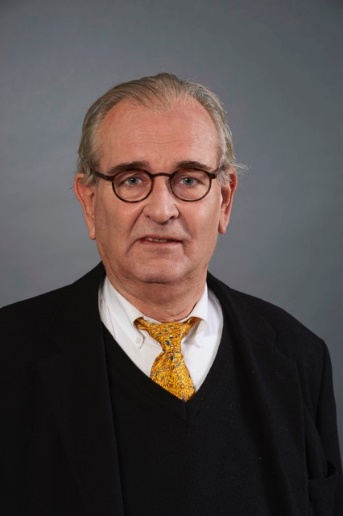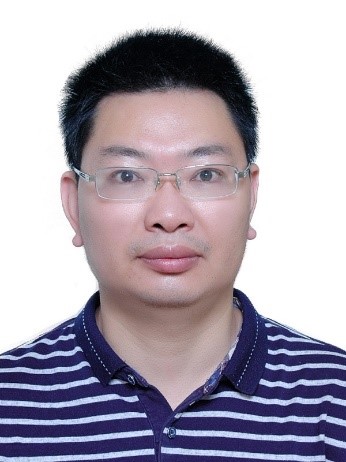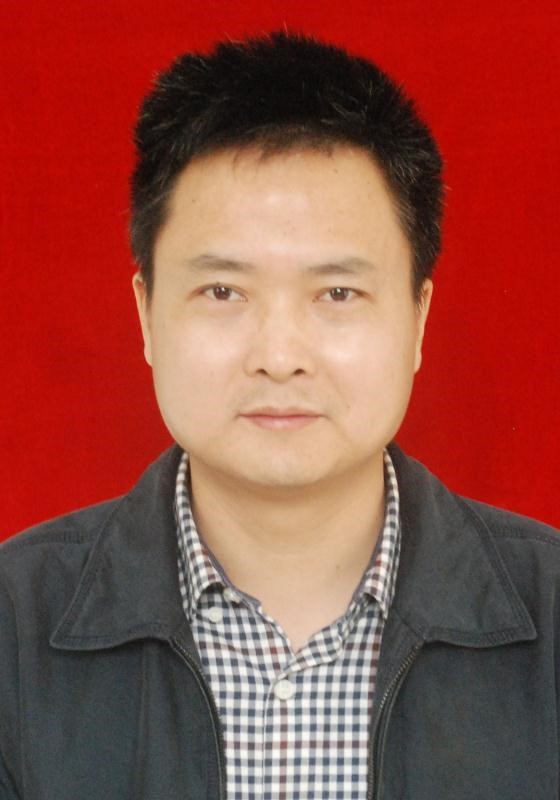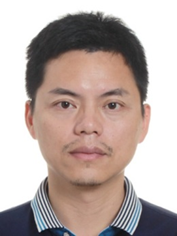

Prof. Rüdiger Dillmann, Karlsruhe Institute of Technology, German (IEEE Fellow, IROS Fellow)
Title: Building Brains for Robots: Neuromorphic SNN-based Controls for Visuomotor Tasks
Abstract: The long-term goal of this research is to understand, model, and translate biomorphic neural principles towards robot control systems. In comparison to conventional computing, the brain is superior in terms of energy efficiency, robustness, and adaptivity. Thus, we investigate modeling biologic processes enabling the brain to perform sensomotoric coordinated activities and finally to implement it in silicon in form of biomorphic hardware. Today's neuromorphic hardware consists of spiking neural networks (SNNs) which can perform fast and efficient computations with continuous input-output streams based on synaptic plasticity. We focus on brain-like senso-motor control tasks and ground them with the help of real robots. Spiking neural networks have the potential on replicating real neurons reflecting parts of their biological characteristics. SNNs are capable to perform synaptic spike-based communication with local brain functionalities supporting learning with the help of neural plasticity mechanisms. We assume, that the brain is forming sensor-motor primitives within building blocks composed for object detection, localization, event prediction, and finally the generation and execution of motion and interaction. The combination of neural motion primitives represents complex muscle motor synergies with the potential to learn complex large-scale motions. Our SNN control architecture is capable to perform tasks like object recognition, object tracking, target reaching and grasping as well as collision- and obstacle avoidance. Closing the visuomotor loop by mapping the learned visual representation to motor commands shows that SNNs learn without any planning algorithms nor inverse kinematics. SNNs are event-driven and model-free. We introduce deep continuous local learning mechanisms achieving state-of-the-art robot accuracy on event stream benchmarks. Biologically plausible reward-learning rules based on synaptic sampling show that SNNs are capable of learning policies and various movement characteristics. Links between reward-modulated synaptic plasticity and online reinforcement learning show proposing results. The hyper-parameters of this neuromodulation and their impact on performance are to be discussed with the help of some closed-loop sensorimotor experiments. The potential of deep reinforcement learning for target reaching affects object interaction, manipulation, and grasping tasks and allows its real-time execution within time-variant situations. An event-driven binocular DVS system is used in stereo mode driven by microsaccades. The spiking feedback information from the DVS and from proprioception is mapped towards motion generating SNNs applying reward coupling and prediction error minimization techniques.
Future work towards the effective use of neuromorphic vision with emphasis on eye movement, microsaccades, visual affordance learning, and high-performance event prediction will be discussed. In addition, it can be shown, that the brain-inspired computational paradigm can be extended towards SNN based navigation and mapping forming episodic spatial neural memories with multi-scale learning capabilities. A software framework for developing and programming the related SNN-clusters and a neural robot platform (NRP) is to be presented.

Prof. Xiaofang Yuan, Hunan University, China
Title: Multi-objective Path Planning for Vehicle on 3D Map
Abstract: In the traditional vehicle area, energy-based motion control technology and battery technology are usually use to solve the energy-saving problem. Our research proposes a new solution from the perspective of path planning. For vehicles traveling on the complex 3D terrains, the energy consumption of up-slope is far greater than that of the flat road and down-slope. To realize this, a path with a good trade-off between energy consumption and distance would be the expected route for electric vehicles and mining transportation. A novel multi-objective path planning method is investigated to solve this problem for EV and mining trucks. The simulation experiments prove that the proposed method can generate an optimal path that saves much energy in comparison with the path provided by the distance-based method.

Prof. Hui Zhang, Hunan University, China
Title: Robot vision anomaly detection for industrial manufacturing
Abstract: Anomaly detection is currently a central issue widely studied in industry and academia,it involves a wide range of scenarios. In the fields of traffic safety, medical imaging, intelligent production, industrial in the section all need to exclude abnormal objects to eliminate the corresponding negative impact for the entire system or individual. This report will introduce the value and significance of the combination of robot and visual inspection technology, as well discussing the differences between traditional anomaly detection methods and current anomaly detection methods. And then, Focusing on the visual anomaly detection technology based on robots in industrial production and manufacturing, meanwhile, we will introduce our team’s related works, which aim at special detection dilemmas for different industrial scenes such as Real-time detection of railway rail anomalies, High-end pharmaceutical anomaly detection, and Industrial sample anomaly detection.

Prof. Xizheng Zhang, Hunan Institute of Engineering, China
Title: Research on Multi-objective load dispatch for a microgrid with electric vehicles using modified gravitational search and particle swarm optimization algorithm
Abstract: With the increasing proportion of electric vehicles in the automobile market, the negative impact of vehicle’s charging on the power system is gradually increasing, such as voltage drop, harmonic pollution, and three-phase imbalance, which will increase its burden at peak times, greatly reducing security and stability. In order to reduce the negative impact of the disorderly grid connection of a large number of electric vehicles on the power system, the charging-discharging model of vehicles and the multi-objective optimization model of the load dispatch for the microgrid are established. At the same time, a modified GSA-PSO algorithm optimization model is adopted. The load dispatch optimization is implemented and analyzed, including the unordered charging strategy, the ordered charging-discharging strategy, and the ordered charging-discharging strategy with distributed generations. The optimization results show that, under the same weight factor, the ordered charging-discharging strategy can reduce 13.38% of the total cost, 78.77% of the microgrid load variance and improve the safety and economy of the grid. In addition, reasonable scheduling of distributed power output power can further reduce the total cost by 14.06% and the load variance by 22.36%. Further, the effectiveness of the proposed scheme is proved by analyzing the influences of different numbers of electric vehicles and different charging models.

Prof. Jianqi Li, Hunan University of Arts and Science, China
Title: Research and application of surface parameter measurement technology of nickel plated punched steel strip for power battery
Abstract: In order to solve the problems of false detection and missed detection on punched steel strip brought by manual inspection, a machine vision detection system for nickel plated punched steel strip is built, from which a defect detection method of nickel-plated punched steel strip based on improved least square method is presented. At first, the image is extracted and preprocessed in order to obtain clear edge images. Then state transition algorithm and iterative algorithm are used to improve the least square method. The iterative algorithm is used to obtain the data set of the center coordinates and the radius of the fitted circle. While the state transition algorithm is used to perform the optimization of the results after multiple iterations to obtain the optimal solution of the center and radius parameters. Finally, the parameters such as hole diameter, transverse hole distance, and longitudinal hole distance are calculated and used to realize defect detection. It also can realize defect detection of the blind hole and connecting hole for nickel plated punched steel strip. The project has been successfully applied in the factory and achieved good economic and social benefits.